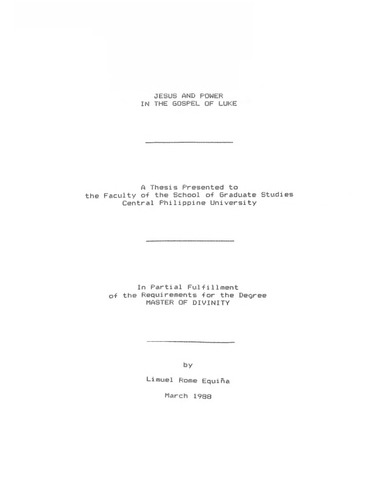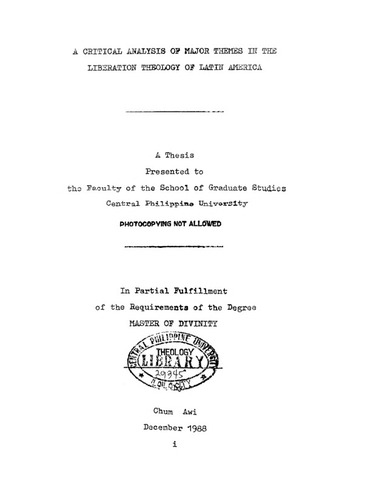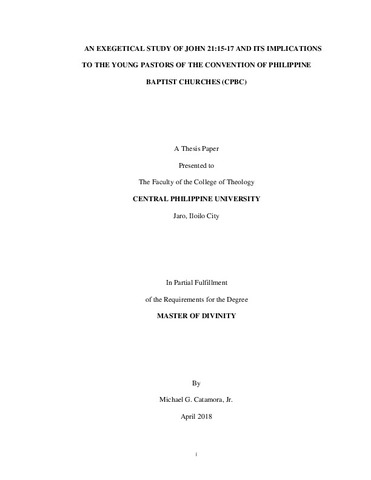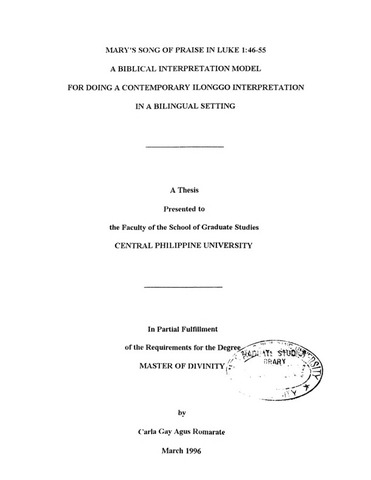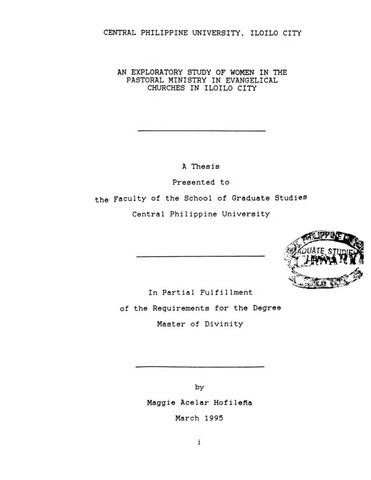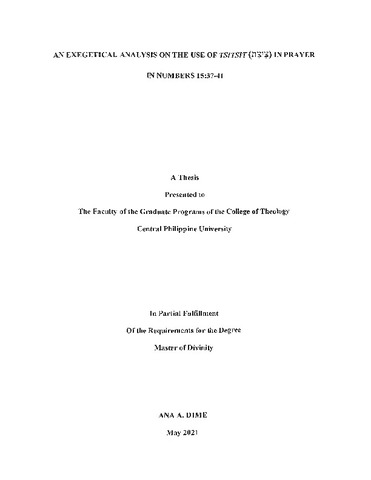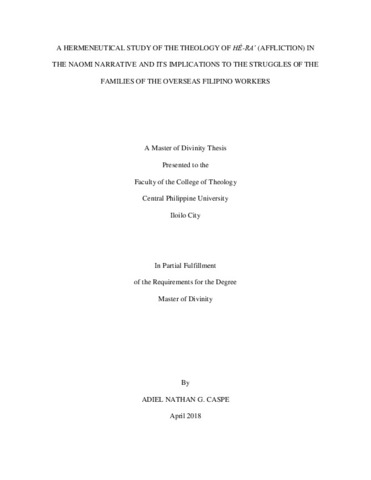Search
Now showing items 1-7 of 7
Jesus and power in the Gospel of Luke
(1988)
Against the background of domination and power struggle both in the religious and the political conditions of the time the author attempts to explore the biblical theology of power according to the Gospel of Luke. This ...
A critical analysis of major themes in the Liberation Theology of Latin America
(1988)
This thesis is an analysis and evaluation of the contents of several major themes of Liberation Theology. Furthermore, it is a response to the criticisms which arise against Liberation Theology. Four major themes, namely, ...
An exegetical study of John 21:15-17 and its implications to the young pastors of the Convention of Philippine Baptist Churches (CPBC)
(2018)
This research paper was inspired by a personal and experiential search for a biblical truth on the pastoral vocation. This study aimed to exegete John 21:15-17 and draw out its implications to the young pastors of the ...
Mary’s song of praise in Luke 1:46-55 a biblical interpretation model for doing a contemporary Ilonggo interpretation in a bilingual setting
(1996)
This is an attempt to ask and answer questions arising from the pericope in Luke 1:46-55. its context and the interpreter's context, in order to develop a contemporary Ilonggo interpretation in a bilingual setting. The ...
An exploratory study of women in the pastoral ministry in evangelical churches in Iloilo City
(1995)
In recent years, there has been a growing awareness around the world of the role of women in shaping and building the destiny of humanity. Women play important roles in the social, economic, and political life of a nation. ...
An exegetical analysis on the use of Tsitsit in prayer in Numbers 15:37-41
(2021)
This study used exegetical method to analyze the use of tsitsit in prayer in Numbers 15:37-41, its origin, function, and meaning. Books, dictionaries, encyclopedias, and other on-line materials were used as relevant references. Results of the study revealed that the commandment of wearing the tsitsit was given by God through Moses while the Israelites were still in the wilderness, after they had gone out from Egypt and before they entered the Promised Land. This commandment was ordained for all generations. A blue thread or cord was specified to be placed on the borders or comers of their garments. The tsitsit (tassels or fringes) serves as a visual reminder to obey the commandments of the Lord. The color tekhelet (blue) was expensive because it came from a rare sea snail that must be harvested by hand and many snails were needed to produce a single drop of dye. In the course of time, garment fashion has changed and the Israelites developed a particular garment called tallit (prayer shawl) on which the tsitsit could be attached. is primarily used in their daily prayers, worship, and other religious ceremonies, and they wear a small tallit for their ordinary daily living. This garment never parts from the wearers until death that it is worn even during burial. Up to this day, Israelites wear the tsitsit attached to the tallit....
A hermeneutical study of the theology of Hế-ra‛ (affliction) in the Naomi narrative and its implications to the struggles of the families of the overseas Filipino workers
(2018)
Poverty has been the common reason cited for the diaspora of Filipinos to find work and sustain their needs as well as that of their family. Hê-ra‛ (affliction) is a common struggle experienced by the OFWs and their families ...


